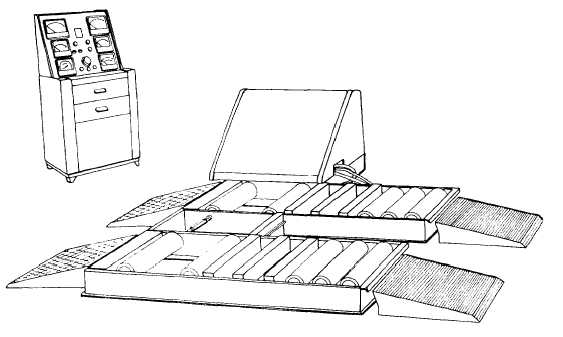Of all the factors given in this formula, only cylinder pressure (P) and engine rpm (N) can be changed during the normal operation of the engine. The remaining factors are constant.
BRAKE HORSEPOWER
BRAKE HORSEPOWER is the actual amount of power that an engine can deliver at a certain speed with a wide-open throttle. The term brake horsepower is derived from the braking device (usually a dynamometer) that is applied to measure the horsepower an engine develops. The dynamometer consists of a resistance-creating device, such as an electric armature revolving in a magnetized field. A paddle wheel revolving in a fluid may also be used to absorb the energy.
An ENGINE DYNAMOMETER maybe used to test an engine that has been removed from the vehicle it drives. If the engine does not develop the manufacturer's recommended horsepower and torque at specific rpms, the engine must be tuned up or repaired.
The CHASSIS DYNAMOMETER can give a quick report on engine conditions by measuring output at various speeds and loads. It is useful in shop testing and adjusting automatic transmissions.
On the chassis dynamometer (fig. 3-1), the driving wheels of the vehicle are placed on rollers. The engine drives the wheels, and the wheels drive the rollers. By loading the rollers varying amounts and by running the engine at different rpms, nearly all normal driving conditions can be simulated. The tests and checks can be made without the interference of body noises, as happens when the vehicle is driven on the road.
FRICTION HORSEPOWER
FRICTION HORSEPOWER is the difference between indicated horsepower and brake horse- power. Actually, it is the power required to overcome friction within the engine, such as friction between engine parts, resistance in driving accessories, and, among other things, loss due to pumping action of the pistons. The latter maybe compared to the effort required to raise the handle of a hand-operated tire pump. It may be difficult to define friction horsepower properly, but with proper maintenance, it can be reduced to improve the mechanical efficiency of the engine.

Figure 3-1. - Chassis dynamometer.
Continue Reading